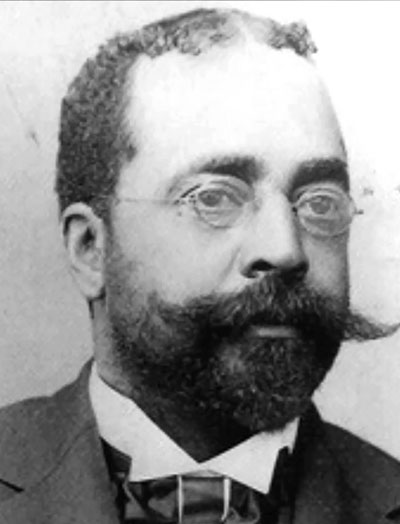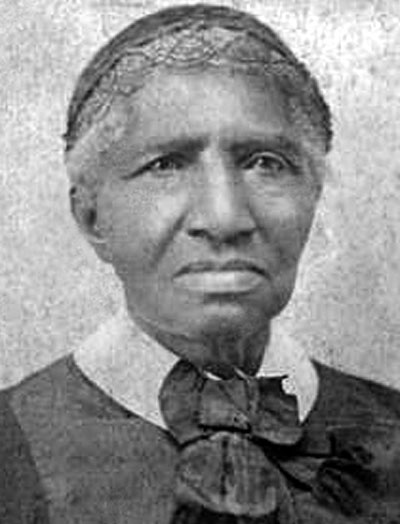DAY 17: BUSINESS/FINANCE PT1 – MIND OVER MONEY; THE CURIOUS CASE OF LEVELING THE ECONOMIC PLAYING FIELD
When it comes to economics in America, there is no doubt about it; Whites have a 300-year head start. In this section, we will explore Black people’s efforts to learn about and operate businesses within the parameters of America’s capitalistic economic system to acquire their 40 acres and a mule.
The first step was freedom. Secondly, Blacks moved one step closer through educating themselves to function within the system. They didn’t just learn the language but the context as well. Soon thereafter, their creativity and innovation began to surface beyond the menial but critical tasks they were limited to performing. It was never a matter of capability but instead, opportunity.
Initially, Blacks were able to engage in sharecropping and other service industries that took advantage of their work ethic. These types of jobs easily translated into service businesses. Additionally, The long hours that Blacks spent tending to White men’s businesses gave them a first-hand perspective on how those businesses were successfully or unsuccessfully operating. These perspectives allowed Black inventors and artisans to make a name for themselves through their creative process-improvement discoveries. Many of these inventors developed patents for products that made daily life more practical. Subsequently, the development of patents opened the door for manufacturing and product sales.
As a result of Jim Crowe, Black businesses served Black customers. However, some Black business pioneers discovered brilliant ideas that allowed them to venture outside of those confines and amass wealth that rivaled their white contemporaries. Eventually, segregation came to an end, and many of the local Black businesses did not survive due to the novelty of Blacks frequenting White establishments for the first time. Black resources began to flow out of the community at an extremely rapid pace crippling its infrastructure.
Nevertheless, the progression of opportunities for African Americans beyond their communities birthed large-scale businesses that flourished. Access was the first step to leveling the playing field. Blacks have taken advantage of the entertainment and design industries, among others, to acquire wealth and reinvest that wealth into practical business models and philanthropic endeavors. As stated previously, a 300-year head start is hard to overcome. However, the Black business pioneers that we are celebrating today have busted down the doors in various areas of opportunity that were not accessible before. We recognize that we still have a long way to go, but despite the challenge, #LetTheTruthBeTold, I have faith in the spirit of Black genius.
We have chosen to celebrate a select few science pioneers for their determination to change the perception of Black peoples contributions and thus change the landscape and future of our country. Today we honor their genius. We must not let their efforts be forgotten or let others bask in the credit of their achievements. Today we change the narrative. #LET THE TRUTH BE TOLD.
“The Early Pioneers of Black Entrepreneurialship”
AGAINST ALL ODDS: THE MIGRATION OF FREE FRANK MCWORTER
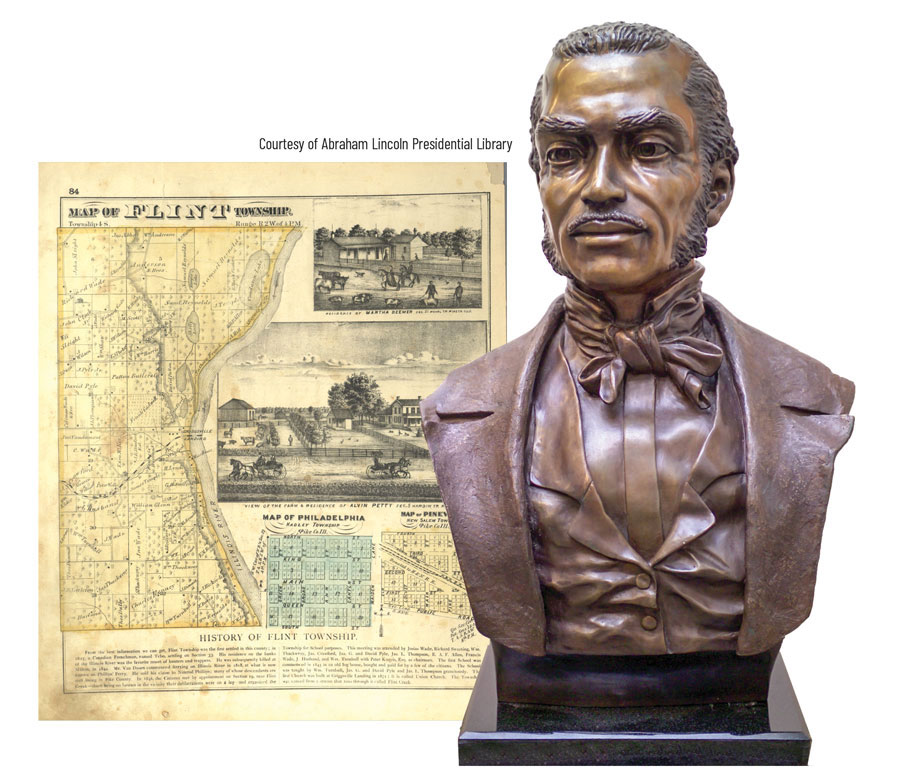
FREE Frank McWorter Negotiated the freedom others and himself with money he earned and saved
The story of Free Frank McWorter, founder of New Philadelphia
Frank McWorter was born in 1777 in what is now Union County, S.C. His mother was Juba, a West African slave belonging to George McWhorter, who is assumed to be Frank’s father. Little is known of Frank’s early years, but McWhorter had a small farming operation and owned a few slaves.
Slave owners in farming areas like Pulaski County realized additional capital by hiring their slaves out to other farmers. Enterprising slaves could hire out their own time, negotiating a yearly price with their master for a specified amount of time and then hiring that time out to others. Any money earned above the obligation to their master was theirs.
Frank was hired out in the community, and by 1810 he was hiring out some of his own time and developing a saltpeter operation. About this time, McWhorter left Pulaski County for Tennessee, leaving Frank behind to manage his property and continue his own saltpeter business, a clear indication he trusted Frank’s judgement as well as his integrity.
The War of 1812 increased the demand for gunpowder; as a result, the price of saltpeter, a principal ingredient, soared, and Frank’s business thrived. In 1817, he purchased his wife’s freedom for $800, ensuring their future children (13 had already been born in slavery) would be free.
Other Artifacts of Free Frank McWorter
The History of Black Business in America, Capitalism, Race, Entrepreneurship · Volume 1
WILLIAM ALEXANDER LEIDESDORFF JR. AND CLARA BROWN
Although little remembered today, Leidesdorff was a social, economic and political force in trade pre-gold rush San Francisco, California with a number of “firsts” credited to his name. When he was named the U.S. Vice Consul to Mexico in 1845, he became the nation’s first African American diplomat.
He was elected to San Francisco’s first city council where he served as San Francisco’s first city treasurer. He was also a part of its first school board in 1847. He built the first hotel, the first shipping warehouse, shipyard, lumber yard, and ship chandlery shop. He operated the first steamboat on San Francisco Bay, and he laid out the first horse race track in California. Additionally, he’s noted as America’s first millionaire of black descent; in 1856, his estate was worth more than $1.4 million (which would be equivalent to more than $20 million today, adjusted for inflation).
“People like Clara Brown are rare. She saw her role in the world not as ‘I’ or ‘me’ against ‘them,’ but as ‘us’ and ‘we,’” says Dr. George Junne, professor of Africana Studies at the University of Northern Colorado. “It was the way that she lived her life that garnered her the amount of respect that she received.”
Ex-slave-turned-pioneer Clara Brown is one of Colorado’s favorite heroes. Born sometime in 1800 (slaves’ birth records were sketchy) and freed from slavery at age 56, Brown made her way to Colorado’s Gold Rush in Central City. She started a laundry business for the miners, as well as using her skills as a midwife, cook and nurse. She also used her earnings to help miners get started. “In Central City she was a picture of kindness—so much so that the miners repaid her services with grubstakes [shares in their profits],” said Suzanne Ramsey, librarian and technology teacher at Bill Roberts School in Stapleton.
When the miners made money, so did Clara—a lot of money. “A great deal is made of the fortune she acquired through hard work and wise investment,” said former Gilpin County Manager Roger Baker. “But the ways in which she used that fortune went well beyond anything I had ever heard—or I think beyond what anyone today really understood.”
She had a spiritual side and became one of the founding members of the nondenominational Union Sunday school through her affiliation with two Methodist missionary ministers. According to Wikipedia, “Brown gave generously of herself to those in the community. She hosted the first Methodist church services at her house and helped those in need any way she could, whether newly settled Euro-Americans or Native Americans. Lovingly called “Aunt Clara,” her home was, “a hospital, a home, a general refuge for those who were sick or in poverty.” She was quoted as saying, “I always go where Jesus calls me.” The Catholic Church and the first Protestant church in the Rocky Mountains were built partly through Brown’s donations toward their construction.”
“Black Captains of Industry”
ANNIE MALONE AND MADAM C.J. WALKER

Madam C.J. Walker 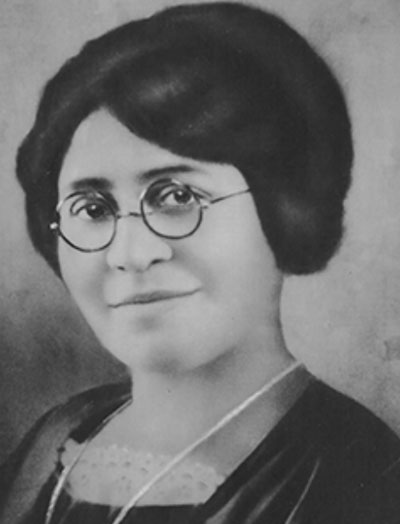
Annie Malone
Entrepreneur and philanthropist Annie Turnbo Malone was born to Robert Turnbo and Isabella Cook in Metropolis, Illinois on August 9, 1869. Her parents were former slaves and her father joined the Union Army during the Civil War.
Turnbo attended school in Peoria, Illinois, but she never finished high school. Instead, she practiced hairdressing with her sister. When she and her family moved to Lovejoy, Illinois, Annie decided she wanted to become a “beauty doctor.” At the age of twenty she had already developed her own shampoo and scalp treatment to grow and straighten hair. Taking her creation to the streets, she went around in a buggy making speeches to demonstrate and promote the new shampoo.
By 1902, Annie Turnbo’s home shampoo venture thrived and she moved to St. Louis, Missouri, home of the nation’s fourth-largest African American population, to expand her business. She was quite successful, and she trademarked her beauty products under the name “Poro.” One of her protégés was Sarah Breedlove, who later became Madam C.J. Walker. Turnbo married in 1903, but soon after her marriage, her husband sought to control her business venture and she divorced him. She married again on April 28, 1914, this time to school principal Aaron Eugene Malone. The marriage lasted thirteen years but ended in divorce as well.
In her lifetime, Malone became one of the nation’s wealthiest black women. She became a leading cosmetic entrepreneur but she was also a leader in the St. Louis black community. In 1918, Poro’s success allowed Malone to build a four-story, million dollar factory and beauty school complex in the historic black neighborhood of “The Ville,” in St. Louis. It employed over 175 people and enabled young black women to pursue their high school and college educations by providing them with jobs and lodging.
Annie Malone the Philanthropist
Madam C.J. Walker was born Sarah Breedlove to former slaves, Owen and Minerva Breedlove in Delta, Louisiana December 23, 1867. Breedlove became an orphan at age seven when her parents died. Three years later, ten-year-old Sarah and her sister moved across to river to Vicksburg, Mississippi to work as maids. By her fourteenth birthday, Sarah married Moses McWilliams of Vicksburg and three years later gave birth to her only daughter Lelia (who later changed her name to A’Lelia). Breedlove became a widow in 1887. She and her daughter moved to St. Louis to join her older brothers who were barbers. While in St. Louis she found work as a washer woman earning $1.50 per day. She also married her second husband, John Davis, in 1894. The marriage lasted nine years.
In 1905, Breedlove moved to Denver, Colorado where she sold hair care products for St. Louis businesswoman Annie Pope-Turnbo. It was in Denver that she married her third husband, newspaper sales agent Charles Joseph Walker. She also decided in Denver to found a business to manufacture and market her own hair treatment formula which she called Wonderful Hair Grower. Breedlove adopted a new professional name, Madam C.J. Walker, which she retained after her divorce from Charles Walker in 1912 and began to offer her products for sale through door-to-door agents called Madam C.J. Walker Hair Culturists. Walker also set up a training school for her sales personnel. Read More.
C. R. PATTERSON & SONS COMPANY CAR MANUFACTURER
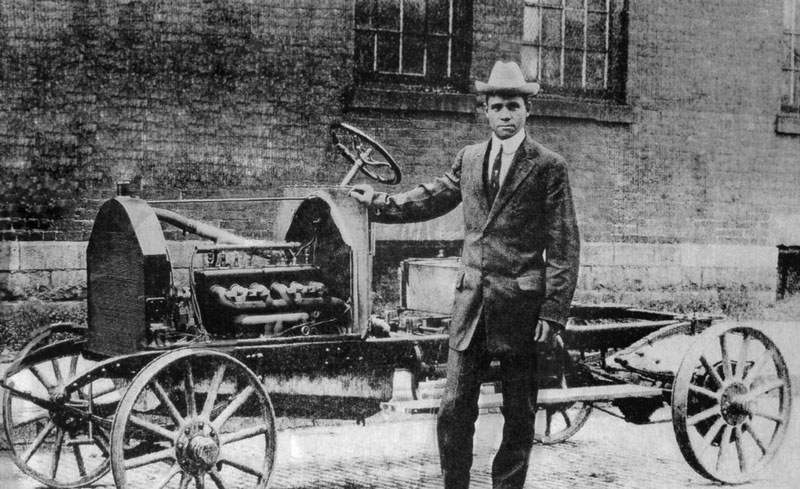
C. R. Patterson & Sons Car Company
The C.R. Patterson & Sons Company was a carriage building firm, and the first African American-owned automobile manufacturer. The company was founded by Charles Richard Patterson, who was born into slavery in April 1833 on a plantation in Virginia, His parents were Nancy and Charles Patterson. Patterson escaped from slavery in 1861, heading west and settling in Greenfield, Ohio around 1862.
At some point after his arrival in Ohio, Patterson went to work as a blacksmith for the carriage-building business, Dines and Simpson. In 1865 he married Josephine Utz, and had five children from 1866 to 1879. In 1873, Patterson went into partnership with J.P. Lowe, another Greenfield-based carriage manufacturer. Over the next twenty years, Patterson and Lowe developed a highly successful carriage-building business.
In 1893 Patterson bought out J.P. Lowe’s share of the business and reorganized it as C.R. Patterson & Sons Company. The company built 28 types of horse-drawn vehicles and employed approximately 10-15 individuals. While the company managed to successfully market its equine-powered carriages and buggies, the dawn of the automobile was rapidly approaching.
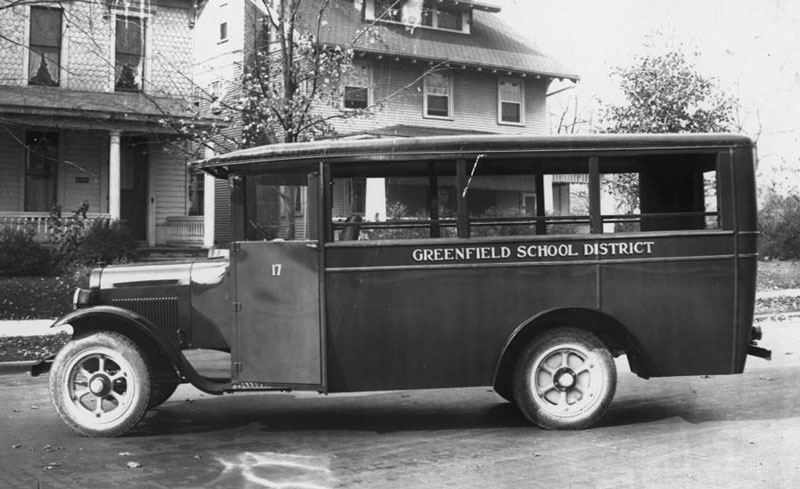
Bus built for the Greenfield School District by the Patterson Company.
Courtesy of the Historical Society of Greenfield, Ohio, www.greenfieldhistoricalsociety.org.
Charles Patterson died in 1910, leaving the successful carriage business to his son Frederick who in turn initiated the conversion of the company from a carriage business into an automobile manufacturer. The first Patterson-Greenfield car debuted in 1915 and was sold for $850. With a four-cylinder Continental engine, the car was comparable to the contemporary Ford Model T. The Patterson-Greenfield car may, in fact, have been more sophisticated than Ford’s car, but C.R. Patterson & Sons never matched Ford’s manufacturing capability.
KEY PRINCIPLES IN NORTH CAROLINA MUTUAL LIFE INSURANCE: JOHN MERRICK, CHARLES SPAULDING & AARON MOORE
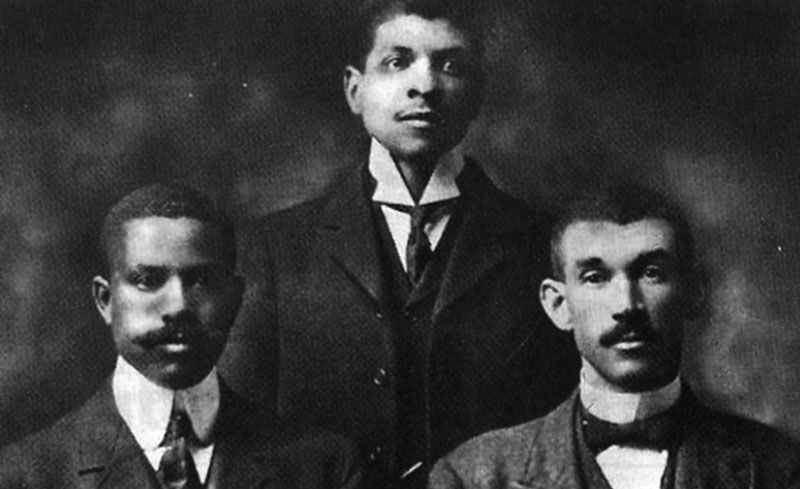
John Merrick, Charles Clinton Spalding, and Aaron McDuffie Moore
John Henry Merrick—insurance agent, entrepreneur, business owner—was born in Clinton, North Carolina on September 7, 1859. Merrick was born a slave;he lived with his mother Martha Merrick and a younger brother. With the 1863 Emancipation Proclamation his family was freed. When Merrick was twelve he and his family relocated to Chapel Hill, North Carolina. He got a job as a helper in a brickyard which provided support for his family. At the age of eighteen Merrick moved to Raleigh, North Carolina where he began work as a hod carrier. Merrick eventually became a brick mason and worked on the construction of Shaw University in Raleigh.
Merrick also worked as a shoe shine boy in a barbershop. When he was not shining shoes he watched and learned the trade of barbering. In 1880, his friend John Wright asked Merrick to join him in relocating in Durham, North Carolina to start a new barbershop business. After six months Merrick bought shares in the barbershop and became its co-owner. In 1892 Wright sold his shares to Merrick making him sole proprietor. Eventually Merrick owned eight barbershops in Durham. Responding to the prevailing racial segregation patterns, Merrick owned shops that catered exclusively to black and white customers.
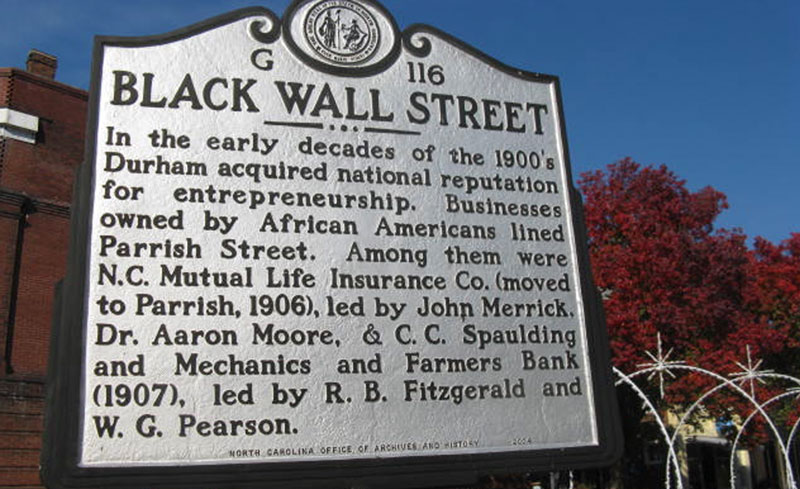
In 1881, one year after Merrick arrived in Durham to work as a barber, he began buying property in an all-black section of the city known as the Hayti. He bought and built rental properties and by the end of the decade Merrick was one of the largest property owners in the Hayti. Merrick then joined two other Durham businessmen, Dr. Aaron M. Moore and Charles Clinton Spaulding to create the Merrick-Moore-Spaulding Land Company.
In 1883 Merrick joined businessmen John Wright, W.A. Day, J.D. Morgan, and T.J. Jones to purchase the Royal Knights of King David, a fraternal lodge which had a budding insurance business. The Royal Knights of David provided inexpensive insurance policies to lodge members. Often this was the only insurance available to African Americans in the Durham area. The lodge and its insurance business expanded across six southeastern states over the next twenty-five years. By the time of his death in 1919, on August 6, 1919, Merrick was the largest shareholder in the lodge’s insurance business.
Merrick is most remembered, however, as one of the founders of the North Carolina Mutual Provident Life Insurance Company which eventually became the largest black-owned insurance company in the United States. Realizing the limitations of lodge-sponsored insurance, Merrick joined Aaron McDuffie, P.W. Dawkings, D.T Watson, W.G. Pearson, E.A. Johnson, and James E. Shepard in 1898 to found North Carolina Mutual Provident Life. Each founder contributed $50 to purchase shares. Merrick was selected as the first company president. Six months after its founding, however, Merrick bought out the other partners and brought in Dr. Aaron M. Moore. They shortened the company name to North Carolina Mutual Insurance Company.
By 1918, North Carolina Mutual had over $1 million in insurance in force and was at that point the largest black-owned insurance firm in the nation. Later they founded the Bull City Drug Company, the Durham Negro Observer, the local black newspaper, and the short-lived Durham Textile Mill. Merrick also helped establish Mechanics and Farmers Bank and the Lincoln Hospital in Durham. Through their efforts Durham, North Carolina became the 20th Century city with the greatest concentration of black-owned business firms in the United States.
Tulsa, OK Was one of many Black wall street prototypes around the country. Durham, NC was perhaps, the most proliferate.
BLACKPAST.COM
Content provided courtesy of History.com, Britannica.com and Wikipedia.com, Biographies.com, Blackpast.com, ncpedia.com, notablebiographies.com, peoriamagazines.com, umass.edu, and the frontporchne.com. All Rights Reserved.


